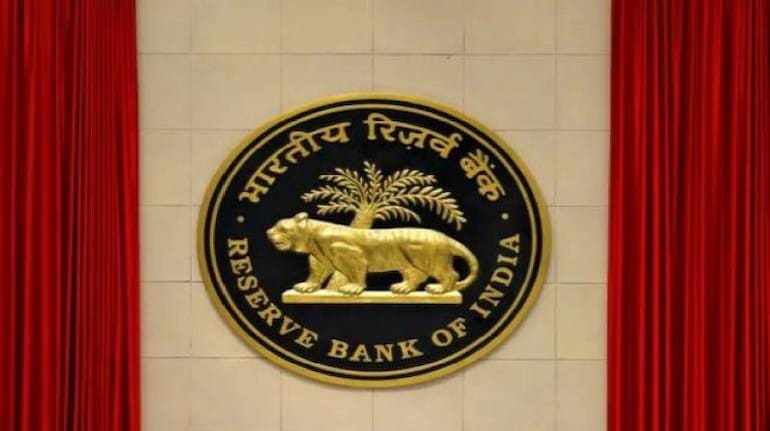



The deadly COVID-19 second wave has impacted the economy. Economists are revising the Indian GDP growth figures based on the second wave and also accounting for the third wave. The decline in economic activity will disturb India’s macro maths, especially the tax revenues.
The GST revenues so far have been strong as for April, the government got a record collection of Rs 1.41 trillion. But the impact of the second wave is likely to be seen in May and June as these things are impacted with a lag. The media is buzzing with articles on the possible shortfall of GST. The government has already estimated a shortfall of Rs 1.5 trillion which does not account for the second wave. The state governments, which are already cash strapped, are asking for higher support from the Centre. Ever since the pandemic, the relations between the Centre and the states have not been healthy, and the slipping GST revenues will likely worsen it.
Amidst all this, once again the Reserve Bank of India (RBI) has come to the fore helping both the forms of governments. Several articles, including one by this author, have been written about how the RBI could transfer a larger share of reserves to the central government to vaccinate all Indians. As if heeding our advice, on May 21 the RBI transferred Rs 99,122 crore.
On first glance, the transfer looked like an interim dividend as was the case in years 2018 and 2019. But markets quickly realised that this was due to change in the RBI’s financial year from July-June cycle to April-Mar cycle. In earlier times, the RBI needed more time to close its accounts but in today’s digitisation era, the RBI could also report its accounts in April-Mar cycle like all other governmental and private organisations. The dividends were earlier announced in August, but will be announced in May from this year onward.
In the Union Budget 2021-22, the government had projected dividend/surplus of the Reserve Bank of India, Nationalised Banks and Financial Institutions at Rs 53,510.61 crore. However, the Centre has got Rs 99,122 crore from the RBI alone which is nearly double the projected amount. The ball is now in Centre’s court on how it uses this bonanza from the central bank. The sceptics are not impressed as even before the pandemic, the government was relying on the central bank for financial support. The pandemic has only furthered this development.
On the state government front, the RBI recently released a report on Ways and Means Advances to State Governments. The report was surprisingly released as part of RBI Bulletin and not separately as in case of other committee reports. Ways and Means Advances are short-term borrowings by state governments (and central governments) from the RBI to tide through temporary mismatches. These WMA are available for 90 days at repo rate and in case borrowing limits cross 90 days, the repo rate +1 percent is charged. The RBI also provides Special Drawing Facility (SDD) and Overdraft (OD) facility to state governments in case the WMA is not adequate.
The WMA facility started right after the RBI inception in 1937 and has been revised several times. In 2015, the limit was kept at Rs 32,225 crore for all the States/UTs which remained till 2020. In April 2020, the limit was revised to Rs 41,900 crore due to the pandemic. As the impact of pandemic and lockdown was severe, the WMA limits were increased further to Rs 51,560 crore.
The RBI also eased borrowing under OD under which the state could remain in OD continuously for 21 working days as against the existing 14 working days. Further, earlier any state could remain in OD for maximum 36 working days in a quarter which was increased to a maximum of 50 working days in a quarter. The states had appreciated the RBI’s relief measures for containing the impact of pandemic.
The new committee has agreed to continue with the interim WMA limit of Rs 51,560 crore till September. After that the RBI needs to assess the situation with state governments based on the course of pandemic and state economies. The committee has given other recommendations and also asked the states to shore reserve funds which will help them borrow from the RBI under the SDF facility. This continued and larger support from the RBI will provide relief to states who are struggling with their financial position.
To sum up, the RBI, like all central banks, continues to be pushed in a corner. The Indian central bank is not just expected to keep the economy and the markets running, but to also find ways to support finances of Centre and state governments. The Centre has been relying on the RBI’s dividends for last few years and was also aggressively using the WMA facility last year. The states are not as lucky and have to rely on the WMA/OD/SDF facilities from the RBI which has increased by three times since 2016-17.
The RBI has also been trying to keep bond yields lower to lower borrowing costs of the government. While one can agree to these intervention in the pandemic year, it has to be seen whether it continues going ahead.
Discover the latest Business News, Sensex, and Nifty updates. Obtain Personal Finance insights, tax queries, and expert opinions on Moneycontrol or download the Moneycontrol App to stay updated!
Find the best of Al News in one place, specially curated for you every weekend.
Stay on top of the latest tech trends and biggest startup news.